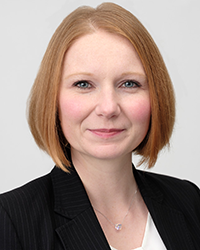

- Eleanor Hill
- Editorial Consultant, Treasury Management International (TMI)

- Martin Bellin
- Board Member, Nomentia
It has been an eventful and, at times, trying spell for treasury technology entrepreneur and innovator Martin Bellin since he sold his eponymous company, BELLIN Group, to US-based procurement giant, Coupa. In this candid interview with TMI, he reflects on the lessons learnt from the exercise and explains why he is delighted to have recently teamed up with fast-growing cash and treasury management solutions provider, Nomentia.
Eleanor Hill, TMI (EH): Great to see you again, Martin. What have you been up to since you sold BELLIN to Coupa in June 2020?
Martin Bellin, Board Member, Nomentia (MB): Following the sale of the BELLIN Group operations, I joined the Coupa team – initially as Senior Vice President (SVP) of treasury management operations and then SVP of Operations EMEA. I left Coupa at the end of 2021 and, at that point, my intention was to say goodbye to the treasury space, leave the party on a high, as it were.
But after just a couple of months, I had agencies and consultancies contacting me to see if I would be interested in certain treasury-related openings. I was also receiving numerous requests for interviews about the treasury market – and you know me, I love to talk about treasury! So, I participated in many of those too.
And I’m pleased that this continuing interest in my services and expertise led to me agreeing earlier this year to join Nomentia as a board member. I work closely with both the company and Inflexion, the majority shareholder in the Nomentia business. I had already been working with Inflexion for a while and, in fact, it was them who asked me to join their mission for Nomentia.
EH: Ah, I knew you couldn’t stay away permanently!
MB: It was always going to be a challenge! And the Nomentia project appeals to me enormously. Yes, it has meant stepping back into my old shoes to some extent, but I am very happy with that because the work is so interesting and Inflexion’s philosophy is in tune with mine. It’s a philosophy I did try to hand over to Coupa, but ultimately they had different ideas and ways of doing business.
What I love is that Inflexion has a long-term view as to how to go about building sustainable, successful businesses. It’s not about short-term performance on the revenue or profitability side for them. They are more interested in what happens if we invest today, for tomorrow. What is the long-term upside? Is it going to help our clients add value to their businesses?
And I feel like I am really adding value at Nomentia, that they appreciate the expertise and knowledge I bring to the table. I’m happy to see them building exactly what I would have built in their position. They are also a lovely bunch of people at Nomentia. So that is my role now. It feels great to be back again.
EH: Good to hear everything is going so well for you. What do you feel you learnt from the BELLIN sale process? Would you do anything differently, in hindsight?
MB: One of the most important things I learnt, or rather had confirmed in no uncertain terms by the experience of selling to Coupa, is just how important it is to understand different people and corporate cultures. A business match on paper doesn’t automatically translate into a corporate match. Or a mindset match.
I have seen how difficult it can be if there is no fundamental understanding between parties on different sides of the table. If you don’t have that in these sorts of situations, expectations will not be met. It doesn’t matter what you discussed or agreed prior to putting pen to paper. The proof of the pudding is in the eating – it’s all about what happens after agreement.
Honestly, my idea of the Coupa acquisition was completely different to how it eventually panned out. I have been asked many times if I think it was a mistake, but how can one be mistaken if one doesn’t have knowledge of all the variables on the table? From the impression I had of the deal – the vision, the ideas, all the discussions we had…purely on that basis I would do the same again. But I learnt a lot from the experience and can use that in the future.
EH: Looking forward, what is Nomentia’s strategy in the treasury space? What are the challenges and opportunities for the business as you see them?
MB: A critical challenge for us is to bring the Nomentia family closer together. The group’s footprint stretches across Finland, Sweden, Austria, Germany, Poland, UK and the Netherlands. Bringing the different cultures, strengths and expertise together is a major aim. In this day and age, physical distance should be no barrier to building a vibrant, respectful, and collegiate corporate culture.
As I said earlier, that dimension is important to me, so it’s heartening that at Nomentia we all share the same philosophy. We agree it is the most positive and efficient way to build the vision we have in mind for the company.
EH: Nomentia is obviously very well known in its home country of Finland. Treasurers in the rest of Europe, however, might not necessarily see it as one of their go-to TMS vendors yet. What can it offer treasurers elsewhere on the continent and further afield? What is its selling point for them?
MB: It’s important to note that Nomentia in its current form was founded in 2020 – in fact, in June 2020, when I signed my contract with Coupa. Which is a little spooky, but in a nice way.
So, it’s a fairly young company from that point of view. For any business that has only been operating in a market for two to three years, I think it is natural to expect growth will need some marketing initiatives in order to create greater recognition in the market. The first step we are going to take is to make it absolutely crystal clear that while our roots are in Finland, and that we are, of course, very proud of that, Nomentia is not just a Finnish company.
And being from Finland, we can certainly say we come from a strong market where we have proven our concepts, our stability, and our ability to deliver. We have added new offerings around areas such as risk management, trading floor operations, and treasury deals. We have experts who are recognised, at least in the DACH [Germany, Austria, and Switzerland] market, as masters of the treasury business.
So, what we are offering is a combination of a solid, reliable organisation and a highly seasoned team that specialises in treasury for 30 years. The priority recently, though, before we begin our next push with clients, is to make sure our offering is really compelling. That has been our homework recently. It is now nearly complete, and we will soon challenge the market. It is then up to us to deliver on the Nomentia vision.
EH: But Nomentia has a significant number of clients already, I understand. Tell us a little bit about the make-up of those users. Do you have a target for the kind of clients and/or sectors you would like to most attract going forward?
MB: Yes, Nomentia has over 30 years of experience in treasury. During this time, 1,400 clients have placed their trust in us. We have all types of clients: small, medium, and large, and right up to companies with multi-billion revenues.
But I’m not a fan of such size categorisations of businesses when it comes to treasury. It doesn’t really reflect what treasury systems should offer in the future. In any case, if you look closely at a large corporate it usually consists of hundreds of small subsidiaries, many of which are potential users of your solutions. They all want guidance, the ability to see everything and not necessarily have to transfer responsibility or even workload back to the central organisation. Size doesn’t matter. It’s about the value we can add, the quality of our solutions, the level of service we offer.
EH: Drilling down a bit further, are there any specific Nomentia strengths and functionalities that you would like to highlight?
MB: The payments arena is one where Nomentia has outstanding capability. In my view, there are fewer than a handful of capable treasury technology providers that successfully offer a global reach for payment capabilities. Taking that into consideration, then there are just a few vendors left that can be taken seriously.
So, payments, which I believe strongly will be absolutely key for treasury systems in the future, is certainly one area that we will be emphasising.
EH: Looking back over the last two to three years with a wide-angle lens, what have been the key developments, in your view, from a treasury management perspective?
MB: If you look at our market, the trends, what people are offering and discussing, my feeling is that despite everything that has happened – Covid, Ukraine and so on – 90% of treasurers’ requirements are still the same as before. Treasury teams still need reliable and easy-to-use, affordable systems that take care of their daily tasks effectively and smoothly.
Then you have the outstanding 10%. This comprises, shall we say, exotic developments, innovations, and trends. The impact of AI technology is clearly something that has moved up peoples’ agendas, especially looking at treasury tasks such as cash flow forecasting. Meanwhile, APIs are becoming more and more ubiquitous across treasury. And then, of course, we have all the developments with crypto and CBDCs to consider. So there has been quite a lot of movement in these more exotic spaces to register in just a few years. Elsewhere, international sanctions have significantly intensified KYC demands.
EH: I’d be interested to know a little bit more about your thoughts on AI and its impact on treasury. What do you foresee?
MB: AI is high-profile news at the moment. It looks to be developing quickly and clearly has potential to impact treasury operations meaningfully over the coming years. But it’s also important to retain some perspective. Yes, AI may well know better than I do what the best decision would be for a certain problem. But in the end, it’s still really me, as a treasurer, who has responsibility for the decision. The buck stops with me. If it goes down the drain, I don’t think my bosses are going to be too impressed with my blaming a computer for it.
Of course, AI is sexy and interesting to talk about all these new trends. But for the overwhelming majority of treasurers, it’s the bread-and-butter operations – cash management, hedging solutions and so on – that remain the priorities.
More broadly, though, away from AI, I sense that one of the most important changes in recent years has been that increasing numbers of companies are realising just how important a role treasury can play in their financial set-up, the value it can add.
EH: Looking specifically at the TMS market, are there any challenges or trends on the horizon? Any particular developments that are important for treasurers to watch or embrace?
MB: Two factors: service and reliability. I believe these will be major differentiators between providers going forward. I’m not talking about technology, or about some feature or functionality within the system. As a treasurer, I need a service provider that helps me to maintain an instrument I’m relying on for my decisions every single day. If I have a problem, it needs to be fixed urgently so the level of service being provided is key.
We in the industry need to understand that treasury requires a certain level of human interaction. It’s about people, really. Because at the end of the day, it is people you are talking to, trying to serve. They will be the ones elaborating on any problems with their systems.
And every treasury department is absolutely unique. It has its own fingerprint, as it were, and as service providers we need to be sharp in picking up on it. If a provider has a skilled customer service team on the other end of the telephone that understands and responds to the unique nature of a particular treasury operation, it makes a big difference all round and gives it a real edge in the market.
EH: So, what would be your advice to treasurers looking to implement a new TMS or switch provider?
MB: If you are going to marry somebody, you should really get to know that person very well first. I always explain to people that the moment they sign a contract with us, that is when our relationship begins, not ends. Too often I see the opposite across the market, a very different sales approach.
For those looking to switch or secure a new TMS, it is crucial they are comfortable with the system provider, reassured about how it will behave regarding service and any concerns that arise afterwards.
I would never criticise other providers’ systems, or claim Nomentia’s own offerings are the best thing since sliced bread. Every company has its strengths and weaknesses, and we are all playing in the same league. Nomentia will not be as well known to TMI readers as some of the more established players, but it’s worth noting we are already among the top five system providers in Europe.
The other major consideration for treasurers looking to switch or buy is the philosophy of the provider, its people. Are they interested in what you do? Are they keen on having a close look into your treasury chest, into your financial heart, and try to understand it? Are they serious and reliable? Or do you fear they might be a little remote? It’s important to understand that different companies offer different levels of service and delivery. So, take your time, think hard before making a decision.
I would also strongly advise that when you are buying or switching, focus on the issues you are trying to solve rather than the solution you might have in mind. I have received so many RFPs over my career and they are quite generic – which means that every TMS vendor could in theory tick 95% of the boxes. Where’s the value in that?
I would advise not starting a selection process with an RFP or a long list of questions. Instead, I highly recommend describing four or five of the biggest challenges you have and then ask the vendor, irrespective of who they are, how they would solve them. That will soon show you how creative they are, especially if you have not dealt with them before.



